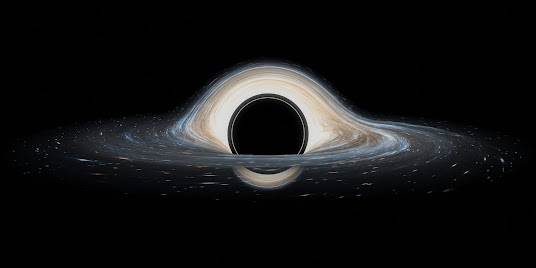The Solar Eclipse of 2025: A Spectacular Celestial Event to Witness
The year 2025 brings an exciting astronomical event that sky-watchers worldwide are eagerly anticipating—the solar eclipse of 2025. A solar eclipse occurs when the Moon passes between the Earth and the Sun, temporarily blocking the Sun's light either partially or completely. The upcoming eclipse will provide a stunning celestial display that will be visible in several regions around the world. In this blog, we will cover everything you need to know about the 2025 solar eclipse, including its date, visibility, best locations to watch, safety tips, and interesting facts. If you're a space enthusiast or someone looking to witness this breathtaking event, keep reading!
The Solar Eclipse of 2025: A Spectacular Celestial Event to Witness
When Will the Solar Eclipse Occur?
The solar eclipse of 2025 is set to occur on March 29, 2025. This will be a total solar eclipse, meaning that for some locations, the Sun will be completely obscured by the Moon, turning day into night for a few minutes. Other areas will experience a partial solar eclipse, where only a portion of the Sun is covered.
Where Will the 2025 Solar Eclipse Be Visible?
The total solar eclipse will be visible in parts of the North Atlantic Ocean, Greenland, Iceland, Europe, and northern Africa. Some of the best places to witness the full eclipse include:
- Spain (specifically in northern regions)
- Portugal
- Greenland
- Iceland
- Western parts of North Africa
- Parts of Northern Europe
Other locations, including the United States and Canada, will witness a partial eclipse where the Sun will appear as a crescent shape in the sky.
Best Places to View the Total Solar Eclipse
If you are planning to travel to witness this once-in-a-lifetime event, here are the top locations with the best visibility and longest duration of totality:
- Spain – Northern Spain is expected to offer some of the clearest views, making it a prime spot for eclipse chasers.
- Portugal – Parts of Portugal will experience totality, offering excellent conditions for observing the event.
- Iceland – If you are an adventurer, witnessing the eclipse from Iceland will be an unforgettable experience.
- Greenland – Though remote, Greenland will see a full eclipse, and those in the right location will witness a truly dramatic celestial event.
What to Expect During the Solar Eclipse
A total solar eclipse is one of the most dramatic celestial events, and witnessing it is an awe-inspiring experience. Here’s what happens during the event:
- Partial Eclipse Begins – The Moon begins to cover the Sun, creating a crescent shape.
- Totality – For those in the path of totality, the Sun is completely blocked, revealing the beautiful corona (the Sun's outer atmosphere). This phase can last anywhere from a few seconds to over four minutes.
- Diamond Ring Effect – Just before totality ends, a bright burst of sunlight appears, creating a stunning visual effect.
- Partial Eclipse Ends – The Moon gradually moves away, and the Sun returns to its full brightness.
How to Safely Watch the Solar Eclipse
Viewing a solar eclipse is an exciting experience, but eye safety is crucial. Looking directly at the Sun can cause permanent eye damage. Here are some safety precautions:
- Use Eclipse Glasses – Always wear certified solar eclipse glasses that meet ISO 12312-2 safety standards.
- Use a Solar Filter – If using telescopes or binoculars, ensure they are fitted with proper solar filters.
- Pinhole Projection – A safe way to watch is to project the Sun’s image onto a surface using a small pinhole.
- Avoid Regular Sunglasses – Ordinary sunglasses do not provide sufficient protection for your eyes.
Interesting Facts About the Solar Eclipse 2025
- This will be the first total solar eclipse visible in Europe since the 1999 eclipse.
- The next total solar eclipse will occur in 2026, making this a rare and special event.
- Animals may exhibit strange behavior, such as birds going silent and nocturnal animals becoming active.
- Some cultures have ancient myths about solar eclipses, often viewing them as omens or supernatural events.
How to Photograph the Solar Eclipse
If you want to capture this incredible event, follow these tips:
- Use a Solar Filter – Just like your eyes, camera sensors need protection.
- Choose the Right Equipment – A DSLR camera with a telephoto lens will help capture detailed shots.
- Stabilize Your Camera – Use a tripod to avoid shaky images.
- Plan Your Shots – Research the eclipse path and practice with the settings beforehand.
Conclusion
The solar eclipse of March 29, 2025, is an event you won’t want to miss. Whether you plan to travel to the path of totality or watch the partial eclipse from your location, this celestial phenomenon promises to be a breathtaking experience.
Remember to follow safety precautions, plan your viewing spot in advance, and get ready for an unforgettable moment in astronomy. Mark your calendars, because the next chance to witness a total solar eclipse won't come again soon!
Are you excited about the solar eclipse 2025? Let us know your thoughts in the comments below, and don’t forget to share this post with fellow skywatchers!





Comments
Post a Comment